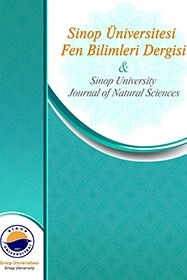Biyoplastiklerin Biyodegradasyonu
Günümüze bakıldığında plastikler yarı sentetik veya sentetik bileşiklerden yapılan, kolay şekil verilebilen, üretiminin kolay olması, suya, kimyasal maddelere ve çevresel değişimlere (ışık, sıcaklık vb.) karşı duyarlı olması sebebiyle kullanımları oldukça geniş bir yer tutmaktadır. Üretime paralel olarak artış gösteren plastik atık kirliliği de hem çevreyi hem de fosil yakıt kaynaklarını önemli ölçüde tehdit etmektedir. Gelişen çevre bilinci ile birlikte daha çevre dostu malzemeler olan biyoplastiklerin bu konuda önemli bir alternatif olduğu düşünülmektedir. Biyoplastikler genel tanımı, bitkisel katı ve sıvı yağlar, bitki nişastaları veya mikroorganizmalar gibi yenilenebilir biyolojik kaynaklardan elde edilen plastikler olarak ifade edilmektedir. Alternatif olarak biyoplastiklerin tercihi ile yenilenebilir kaynakların artışının da sürdürülmesi amaçlanmaktadır. Tarımsal atıklar gibi yenilenebilir kaynakların tüketilmesi ve farklı çevrelerde biyolojik olarak ayrışması biyoplastiklerin daha kolay benimsenmesini sağlamıştır. Biyoplastiklerin biyodegradasyonu sahip oldukları fiziksel ve kimyasal yapılarından kaynaklanmaktadır. Biyoplastiklerin çevre dostu ürünler olması, kullanılan teknolojilere uyum sağlamaları nedeniyle kullanımlarındaki artış ile gelecekte plastiklerin yerini alacağı düşünülmektedir. Bu çalışmada, biyoplastiklerin biyobozunurluk durumları incelenmiştir.
Anahtar Kelimeler:
Plastikler, biyoplastik, biyodegradasyon, biyobozunur plastik.
Biodegradation of Bioplastics
Looking at today, plastics are widely used because they are made of semi-synthetic or synthetic compounds, are easily shaped, easy to produce and sensitive to water, chemicals and environmental changes (light, temperature, etc.). Plastic waste pollution, which increases in parallel with production, poses a significant threat to both the environment and fossil fuel sources. Bioplastics, which are more environmentally friendly materials with developing environmental awareness, are considered to be an important alternative in this regard. The general definition of bioplastics is referred to as plastics obtained from renewable biological sources such as vegetable fats and oils, plant starches or microorganisms. Alternatively, the preference of bioplastics is intended to sustain the increase of renewable resources. Consumption of renewable resources such as agricultural wastes and biodegradation in different environments have made bioplastics easier to adopt. Biodegradation of bioplastics is due to their physical and chemical structure. Bioplastics are considered to be environmentally friendly products and adapt to the technologies used, thus increasing their usage in the future.
Keywords:
Plastics, bioplastic, biodegradation, biodegradable plastic,
___
- [1] Emadian M. S., Onay T., Demirel B., 2017. Biodegradation of bioplastics in natural environments, Waste Management, 59, 526-536.
- [2] Harding K. G., Gounden T., Pretorious S., 2017. "Biodegradable" plastics: A myth of marketing?, Procedia Manufacturing, 7, 106-110.
- [3] EU, 2013. Green Paper on a European Strategy on Plastic Waste in the Environment.
- [4] European Commission, 2011. Plastic Waste in the Environment, Final Report.
- [5] European Bioplastics. 2017. “What are bioplastics?”. https://www.european-bioplastics.org/bioplastics/ 13 Ekim 2018‟de erişildi.
- [6] Kumru, M. 2013. "Biyoplastik pazarının Türkiye‟deki durumu nasıl?‟, http://www.biyoplastik.net/2013/02/biyoplastik-pazarnn-turkiyedeki-durumu.html, 28 Mayıs 2018‟de erişildi.
- [7] Gülşen H., Akin B., 2017. Biyoplastikler ve çevresel etkileri, Academia Journal of Engineering and Applied Sciences,1 ,3 ,1-9.
- [8] Vroman, I., Tighzert, L. 2009. "Biodegradable Polymers", Materials, 2, 307–344.
- [9] Sarasa J., Gracia J. M., Javierre C., 2009. Study of the biodisintegration of a bioplastic material waste, Bioresource Technology, 100, 3764-3768.
- [10] Siracusa V., Rocculi P., Romani S., Dalla Rosa M., 2008. Biodegradable polymers for food packaging: a review, Trends Food Science Technology, 19, 634–643.
- [11] Arıkan E., Özsoy H. D., 2014. Bitkilerden biyoplastik üretimi, Bursa Tarım Kongresi, Türkiye.
- [12] Özdemir N., Erkmen J., 2013. Yenilenebilir Biyoplastik Üretiminde Alglerin Kullanımı, Karadeniz Fen Bilimleri Dergisi / The Black Sea Journal of Sciences 3(8), 89-104.
- [13] European Bioplastic, 2015. http://en.european-bioplastics.org/technology-materials/materials/ Son Erişim Tarihi: 13/10/2018.
- [14] https://yesilintakipcisi.wordpress.com/2011/02/19/biyocozunur-plastik standartlari/, 28 Mayıs 2018‟de erişildi.
- [15] Malinconico, M., Immirzi, B, Santagata G., Schettini, E., Vox, G. ve Scarascia Mugnozza, G. 2008. “An overview on innovative biodegradable materials for agricultural applications”. Progress in polymer degradation and stability research. Editor: Moeller, H.W. New York: Nova Science.
- [16] Malinconico, M., Immirzi, B., Massenti, S., La Mantia, F.P., Mormile, P. ve Petti, L. 2002. “Blends of polyvinyl alcohol and functionalized polycaprolactone. A study of the melt extrusion and post-cure of films suitable for protected cultivation”, Journal of Material Science, 37, 4973-4978.
- [17] Kyrikou, I. ve Briassoulis, D. 2007. “Biodegradation of agricultural plastic films: A critical review”, Journal of Polymers and the Environment, 15, 125-150.
- [18] Imam, S.H., Cinelli, P., Gordon, S.H. ve Chiellini, E. 2005. “Characterization of biodegradable composite films prepared from blends of poly (vinyl alcohol), cornstarch and lignocellulosic fiber”, Journal of Polymers and the Environment, 13(1), 47-55.
- [19] Tzankova Dintcheva, N. ve La Mantia, F.P. 2007. “Durability of a starch-based biodegradable polymer”, Polymer Degradation and Stability, 92, 630-634.
- [20] Kijchavengkul, T., Auras, R., Rubino, M., Ngouajio, M. ve Fernandez, R.T. 2008a. “Assessment of aliphatic-aromatic copolyester biodegradable mulch films, Part I: field study”, Chemosphere, 71, 942-953.
- [21] http://www.bioplasttr.net/compost.html , 28 Mayıs 2018‟de erişildi.
- [22] ASTM D 5988-03. 2003. Standard test method for determining aerobic biodegradation in soil of plastic materials or residual plastic materials after composting. ASTM International, West Conshohocken, PA USA.
- ISSN: 2536-4383
- Başlangıç: 2016
- Yayıncı: -
Sayıdaki Diğer Makaleler
Türkiye’nin Edirne ve Kırklareli İllerindeki Amfibi ve Sürüngen Türlerinin Yol Ölümleri
Ufuk BÜLBÜL, Ali İhsan EROĞLU, Bilal KUTRUP, Muammer KURNAZ, Halime KOÇ, Yasemin ODABAŞ
Zeynep DEMİRCİOĞLU, Cem Cüneyt ERSANLI, Gökhan ALPASLAN
Biyoplastiklerin Biyodegradasyonu
Özge KÖKSAL, Bilge AYDIN ER, Yüksel ARDALI, Mustafa SAĞLAM
Mehmet Taciddin AKÇAY, İlhan KOCAARSLAN
Gıdalarda Aflatoksin Düzeylerinin Belirlenmesinde Kullanılan Analiz Yöntemleri
Merve AÇU, Özgül ÖZDESTAN OCAK
Bahar DEMİRCAN, Özgül ÖZDESTAN OCAK
